Ways To Get Your Kids Off Sugar
 Early studies showed fat was the culprit for high cholesterol and plaque buildup in arteries, but the real villain in this case is sugar. Sugar is responsible for so many health conditions, not to mention lots of fillings and dental work. If you find your child gets unruly after eating sweets, it’s another good reason to get your kids off sugar and find ways to make eating healthy a treat.
Early studies showed fat was the culprit for high cholesterol and plaque buildup in arteries, but the real villain in this case is sugar. Sugar is responsible for so many health conditions, not to mention lots of fillings and dental work. If you find your child gets unruly after eating sweets, it’s another good reason to get your kids off sugar and find ways to make eating healthy a treat.
Getting your child to eat healthy may not be easy, but it’s worth it.
Check the labels on the food you serve. Often sugar is one of the top ingredients. That doesn’t mean you’re out of danger. Manufacturers got wise to that type of shopping and instead of using one type of sugar, they use several types of sweeteners so all of them are further down on the list and you don’t know just how much sugar there is in the food. What’s the best way to fight this and make sure you control the sugar? Make the food yourself. Some people make a menu and shopping list one night, shop the next and cook the week’s meals, plus a few extra to freeze for later, on the weekend. That way, you don’t have to spend the time shopping or worrying whether sugar is hidden.
What your child drinks is just as important as what he or she eats.
Are you giving your child soft drinks? If so, stop!!! It’s nothing more than sugary flavored bubble water that’s high in calories. Fruit drinks are just as bad, since most only contain a little juice and lots of extra sugar. Even real fruit juice is high in sugar and can cause a spike in blood sugar, since the pulp/fiber in the whole fruit actually slows it. What’s the best option? Plain water is good, but if you want to make it fancy, make it fruit infused water with fruit slices in it. Kids love it.
Snacks without added sugar don’t have to be difficult to create.
Who doesn’t love a slice or two of apple with some chunky natural peanut butter. A bag of homemade trail mix is also good. Get some small snack size bags and put individual servings of mixed nuts in the bag for another healthy snack. Whether it’s young kids or teens, a bowl of fruit that’s already cut up is just an invitation for snacking. Slice up a watermelon or cantaloupe and set out a bowl so it’s ready for snacking.
- Joining your kids in giving up sugar is a great idea. Did you know that too much sugar speeds up the aging process? That can’t make any adult happy!
- Your children will be healthier when you reduce the amount of added sugar in their diet. Sugar negatively affects the immune system and lead to more illness and infections.
- Sugar negatively affects cognitive thinking. One study shows that when sugar was removed from children’s diets at one New York school, the academic ranking went up 15.7%.
- Don’t worry if your child eats some cake and ice cream at a birthday party occasionally, just don’t have it as a constant part of their diet. We have loads of recipes to help cut back on sugar.



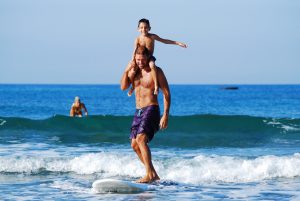 I love the fact that we have something for everyone at Evolution Lifestyle Fitness in Raleigh, NC, whether the person is six or sixty. You can get the kids involved, while also working out yourself and bringing an aging parent in for exercise that can help keep them more independent. Our online fitness program can make it even easier to keep the family fit. Fitness should be a family affair. That scheduled workout and healthy meals can prevent long hours spent at the doctor’s office, while creating a family bond that lasts for years.
I love the fact that we have something for everyone at Evolution Lifestyle Fitness in Raleigh, NC, whether the person is six or sixty. You can get the kids involved, while also working out yourself and bringing an aging parent in for exercise that can help keep them more independent. Our online fitness program can make it even easier to keep the family fit. Fitness should be a family affair. That scheduled workout and healthy meals can prevent long hours spent at the doctor’s office, while creating a family bond that lasts for years.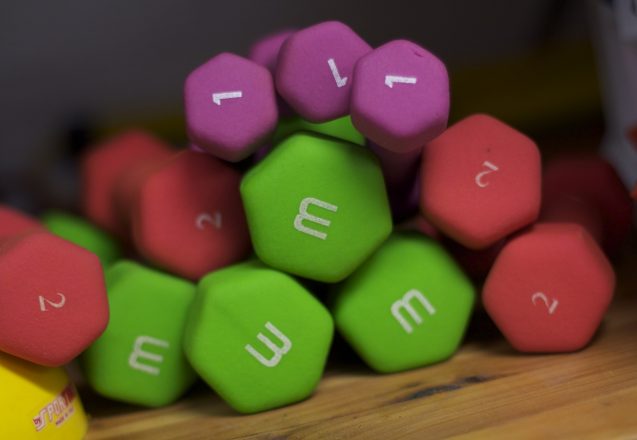
 If you’ve read reports that weight training for kids is dangerous, my response is yes and no. Let’s look at the instances that may have a potential to affect the health of a child. Some studies show that weight training before puberty might lead to injuries, affect growth, while not increasing muscle strength. That’s only true when done improperly. The right form and correct safety measures must be taken and the program should be monitored and carefully planned to be its safest and most beneficial.
If you’ve read reports that weight training for kids is dangerous, my response is yes and no. Let’s look at the instances that may have a potential to affect the health of a child. Some studies show that weight training before puberty might lead to injuries, affect growth, while not increasing muscle strength. That’s only true when done improperly. The right form and correct safety measures must be taken and the program should be monitored and carefully planned to be its safest and most beneficial.
 Our children in Raleigh, NC, aren’t getting enough sleep. It’s an epidemic that first hit the adult population and now has invaded the young. It’s especially important for the student athlete or physically active young person that wants to succeed in their sport and is often the key to a winning performance. When you sleep, part of the brain and body is extremely active and the jobs done during REM sleep makes a difference both mentally and physically.
Our children in Raleigh, NC, aren’t getting enough sleep. It’s an epidemic that first hit the adult population and now has invaded the young. It’s especially important for the student athlete or physically active young person that wants to succeed in their sport and is often the key to a winning performance. When you sleep, part of the brain and body is extremely active and the jobs done during REM sleep makes a difference both mentally and physically.
 There’s a surge in the percentage of children that are overweight, obese or extremely obese. It’s a phenomenon that’s world wide for both children and adults. It’s more prevalent in adults with half the adults being overweight, obese or extremely obese and one in every six child falling into those categories. While it is prevalent in America, it’s also high in Mexico, New Zealand and Hungry. Until recently, Japan and Korea were the countries with the lowest obesity rates, but as the Western food permeates the cultures, Obesity is rising in Japan due to a change to the Western diet. That tells you it’s primarily from the food eaten and a sedentary lifestyle. It’s easier to stop childhood obesity before it has a chance to start.
There’s a surge in the percentage of children that are overweight, obese or extremely obese. It’s a phenomenon that’s world wide for both children and adults. It’s more prevalent in adults with half the adults being overweight, obese or extremely obese and one in every six child falling into those categories. While it is prevalent in America, it’s also high in Mexico, New Zealand and Hungry. Until recently, Japan and Korea were the countries with the lowest obesity rates, but as the Western food permeates the cultures, Obesity is rising in Japan due to a change to the Western diet. That tells you it’s primarily from the food eaten and a sedentary lifestyle. It’s easier to stop childhood obesity before it has a chance to start.
 There are lots of different skills required for athletics. While your kid may seem to be the most nonathletic individual you’ve ever met, there may be a hidden athlete under that veneer. All children take time to mature and develop. While they may not be athletic right now, that doesn’t mean that they can’t develop strength, endurance, flexibility and balance. Those are all the traits necessary for an athlete.
There are lots of different skills required for athletics. While your kid may seem to be the most nonathletic individual you’ve ever met, there may be a hidden athlete under that veneer. All children take time to mature and develop. While they may not be athletic right now, that doesn’t mean that they can’t develop strength, endurance, flexibility and balance. Those are all the traits necessary for an athlete.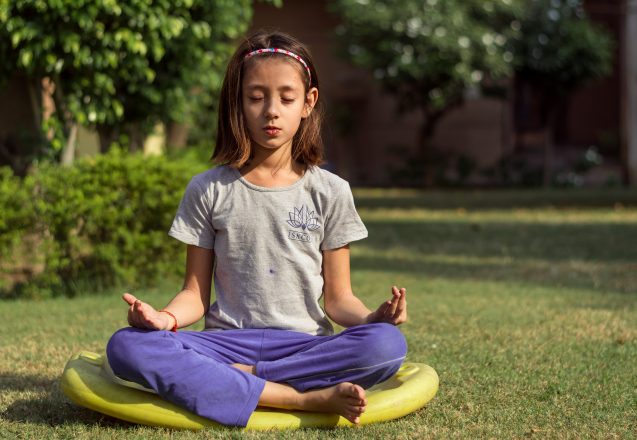
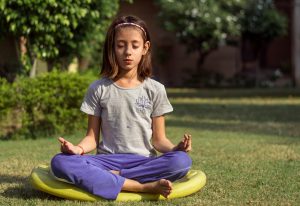 I have parents in Raleigh, NC, that are concerned for the health of their children, given so many more sedentary alternatives, like online games, are available. I understand their concern, which is why yoga, kids and all fitness training for children is an important part of our services. Kids learn what they live and there’s no better time to help them develop healthy lifestyle habits. Healthy eating and an active lifestyle is important, not only for a healthy childhood, but for continuing health throughout their lives.
I have parents in Raleigh, NC, that are concerned for the health of their children, given so many more sedentary alternatives, like online games, are available. I understand their concern, which is why yoga, kids and all fitness training for children is an important part of our services. Kids learn what they live and there’s no better time to help them develop healthy lifestyle habits. Healthy eating and an active lifestyle is important, not only for a healthy childhood, but for continuing health throughout their lives.
 You can build memories and help develop a love of fitness by exercising with kids on vacation. Does that mean you’re actually going to do jumping jacks at the rim of the Grand Canyon or have everyone drop and give ten visiting the nations capital? Absolutely not. It means you plan an active vacation, even if it is a staycation. Find ways to include things that are active and help build endurance, strength, flexibility or balance.
You can build memories and help develop a love of fitness by exercising with kids on vacation. Does that mean you’re actually going to do jumping jacks at the rim of the Grand Canyon or have everyone drop and give ten visiting the nations capital? Absolutely not. It means you plan an active vacation, even if it is a staycation. Find ways to include things that are active and help build endurance, strength, flexibility or balance.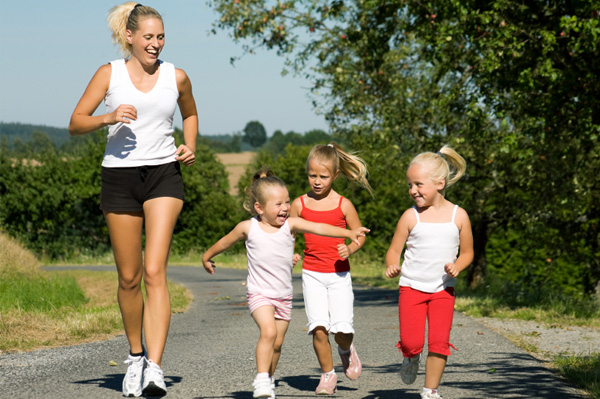
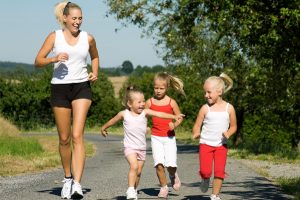 While most parents focus on exercising and getting themselves into shape, getting fit should be a family experience. Even grandma and grandpa will enjoy eating healthy and working out when you make fitness fun. Too often people make getting fit more of a punishment for bad habits of the past. It shouldn’t be that way. Getting fit should be an adventure that leads down a road to looking and feeling great!
While most parents focus on exercising and getting themselves into shape, getting fit should be a family experience. Even grandma and grandpa will enjoy eating healthy and working out when you make fitness fun. Too often people make getting fit more of a punishment for bad habits of the past. It shouldn’t be that way. Getting fit should be an adventure that leads down a road to looking and feeling great!
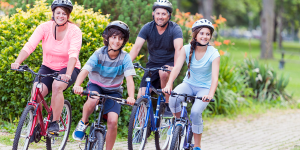 Whether you’re running a multi-million dollar company in Raleigh, NC, or running a household, you have to lead by example to be your most effective. It’s hard for a child to believe there’s any truth that eating healthy and exercising is good for you, especially when parents don’t do it. There’s a lot of examples where children follow the actions of their parents, rather than their words. Children learn what they live, not necessarily what they hear. To make sure your child or family is healthy, you have to make changes in your life toward a healthier lifestyle.
Whether you’re running a multi-million dollar company in Raleigh, NC, or running a household, you have to lead by example to be your most effective. It’s hard for a child to believe there’s any truth that eating healthy and exercising is good for you, especially when parents don’t do it. There’s a lot of examples where children follow the actions of their parents, rather than their words. Children learn what they live, not necessarily what they hear. To make sure your child or family is healthy, you have to make changes in your life toward a healthier lifestyle.